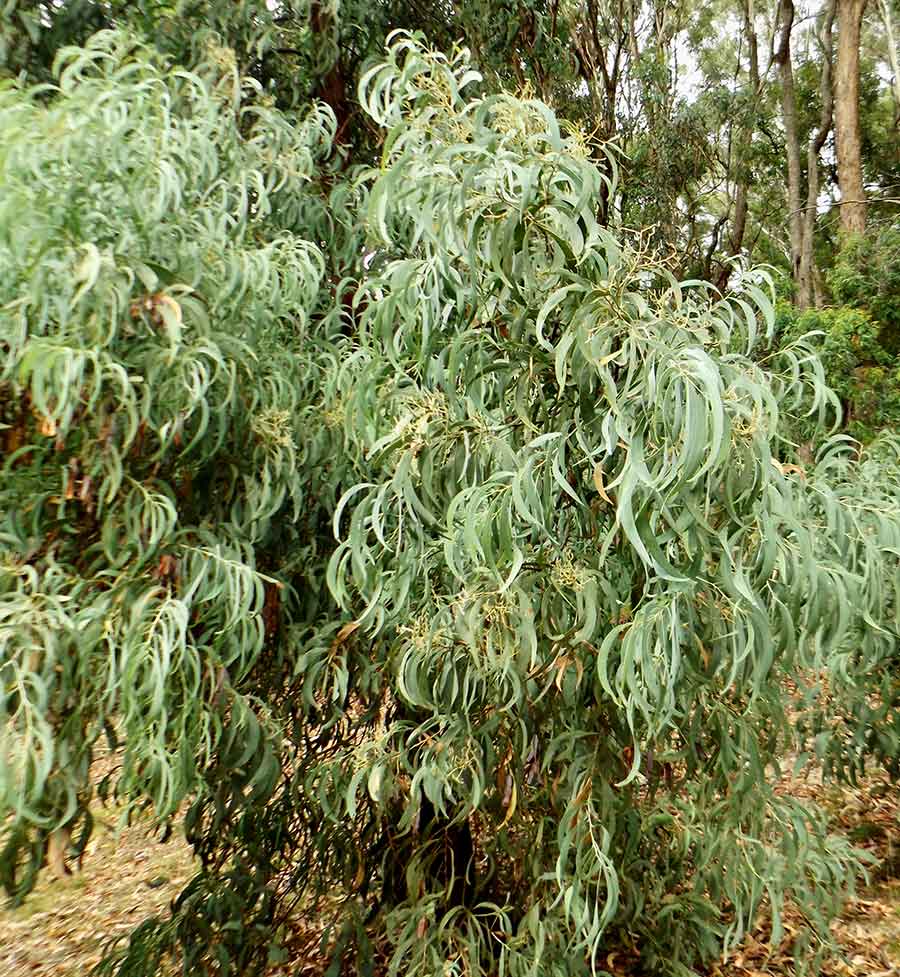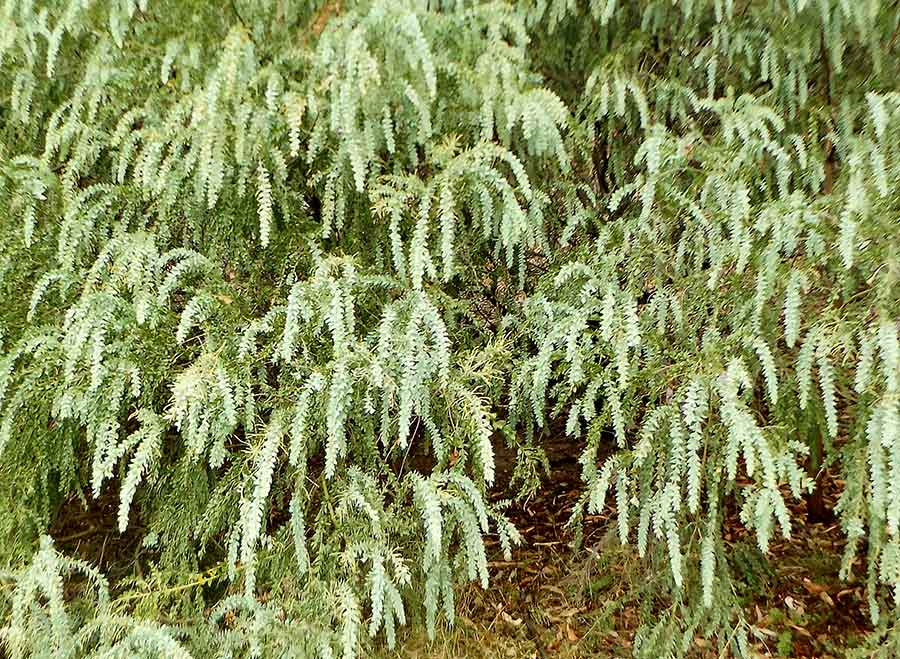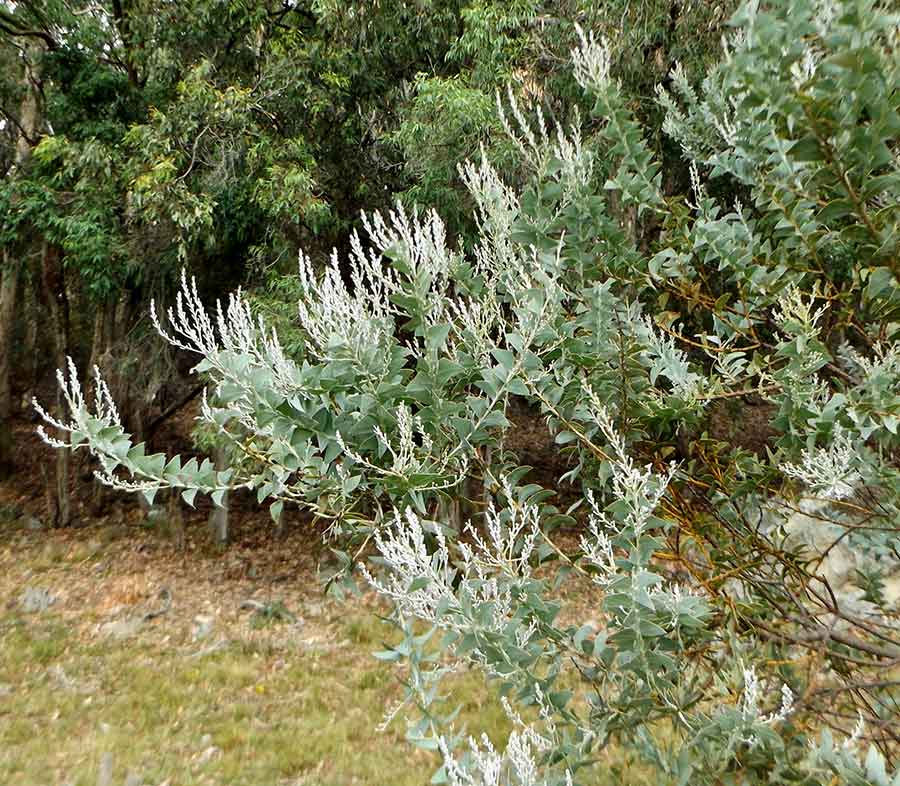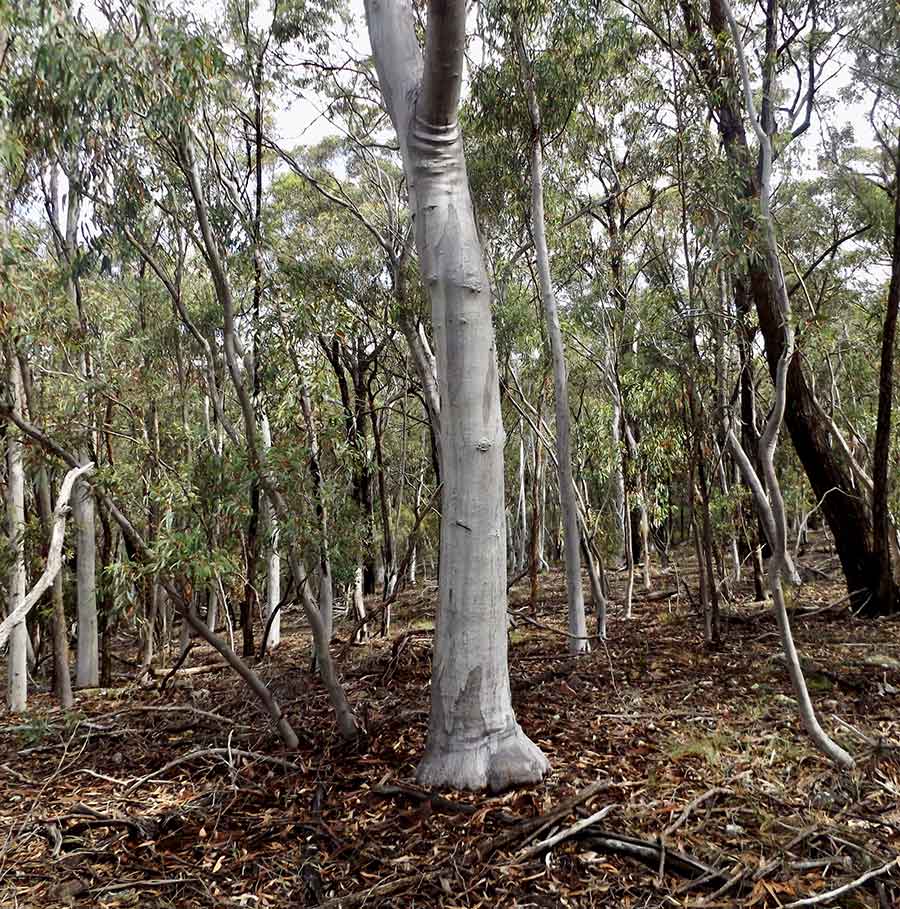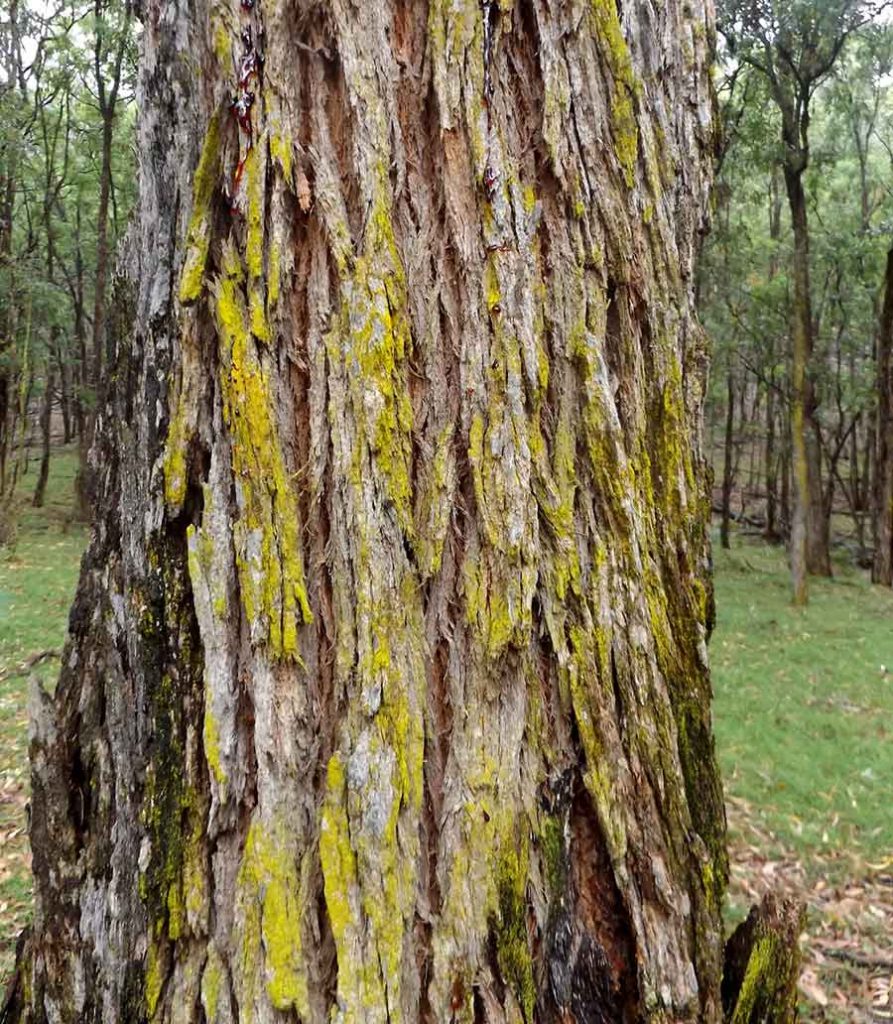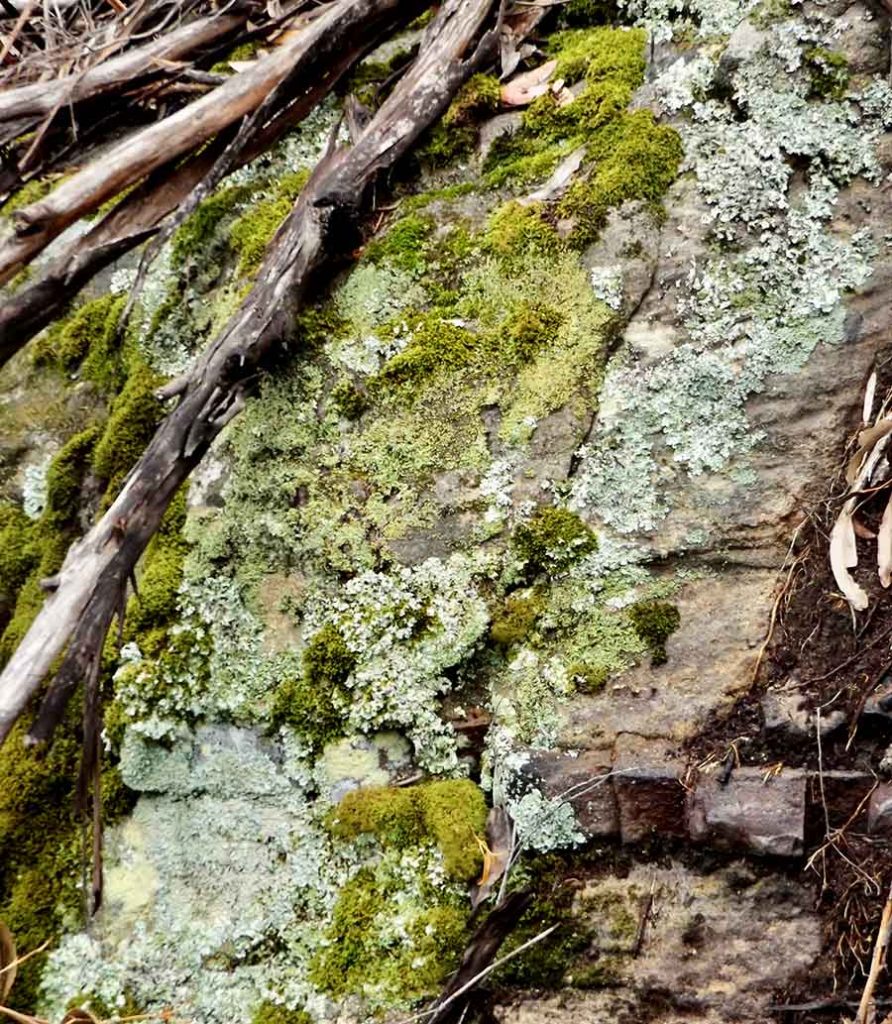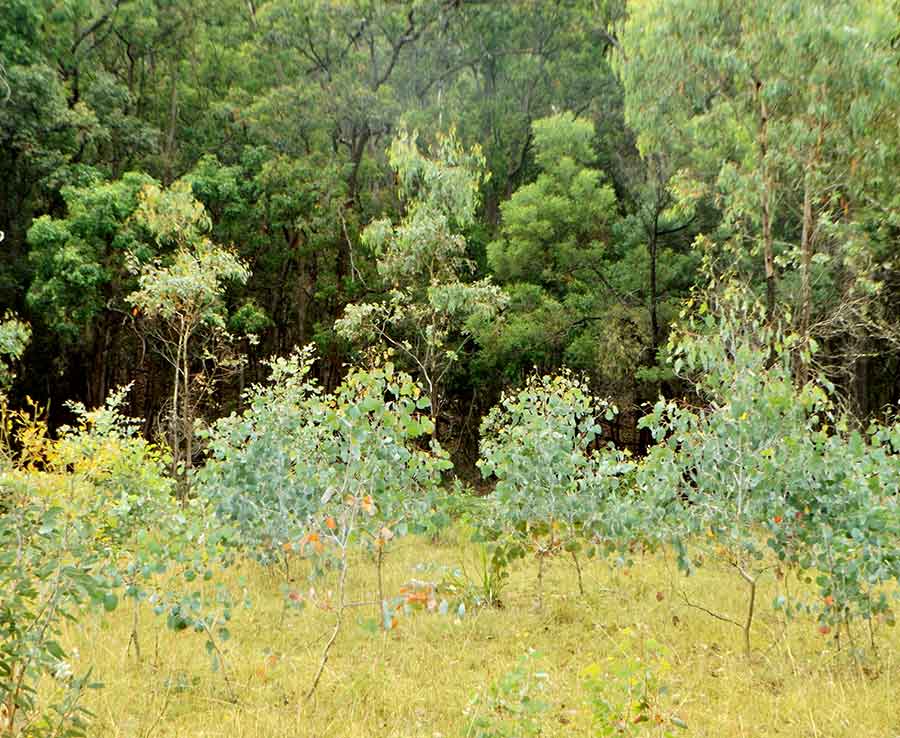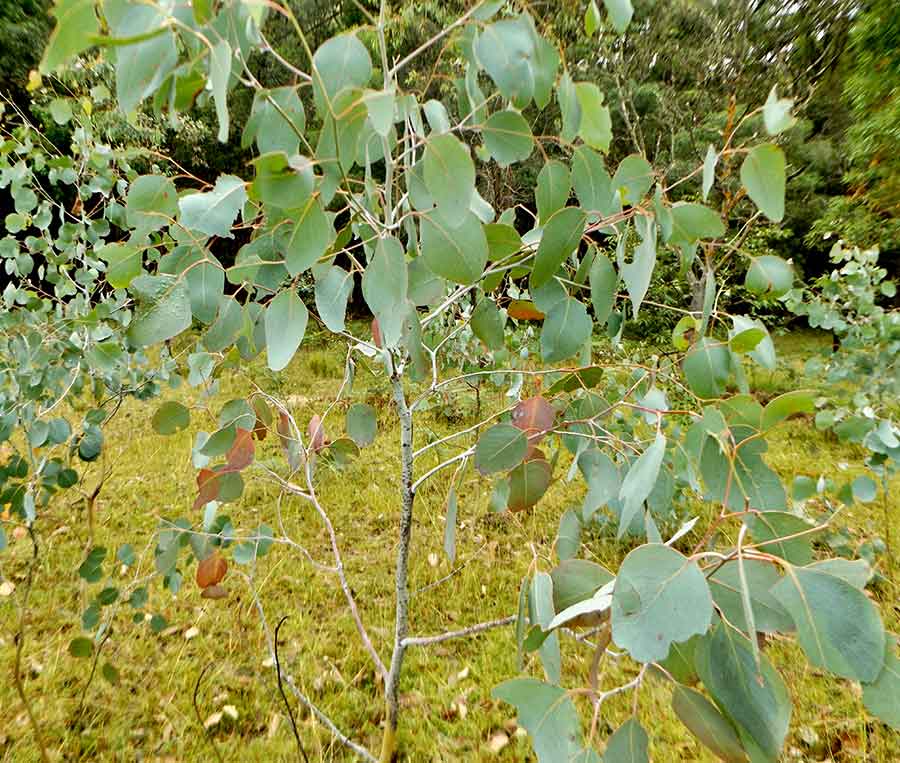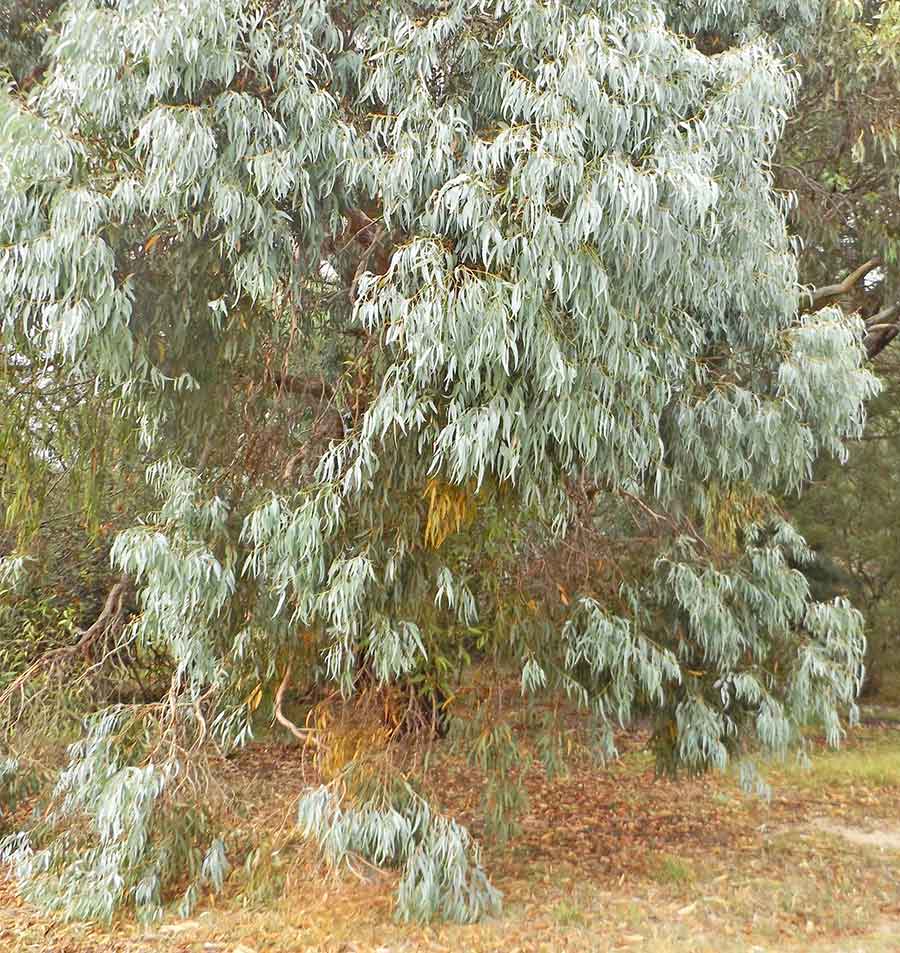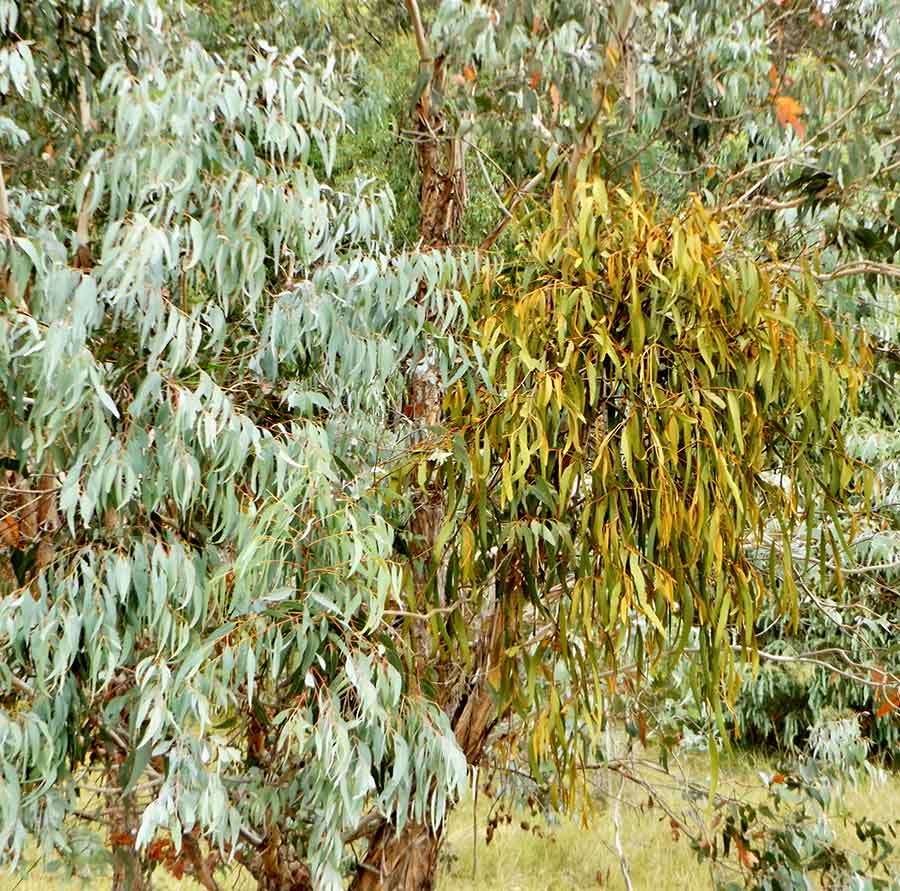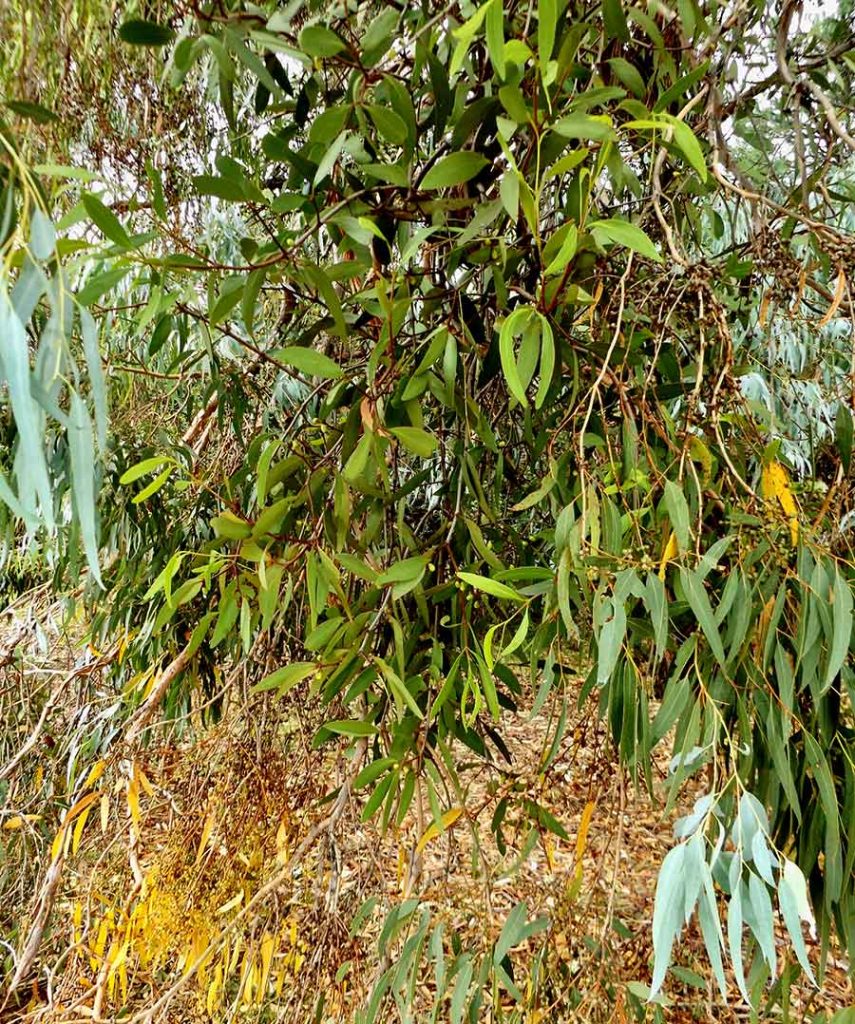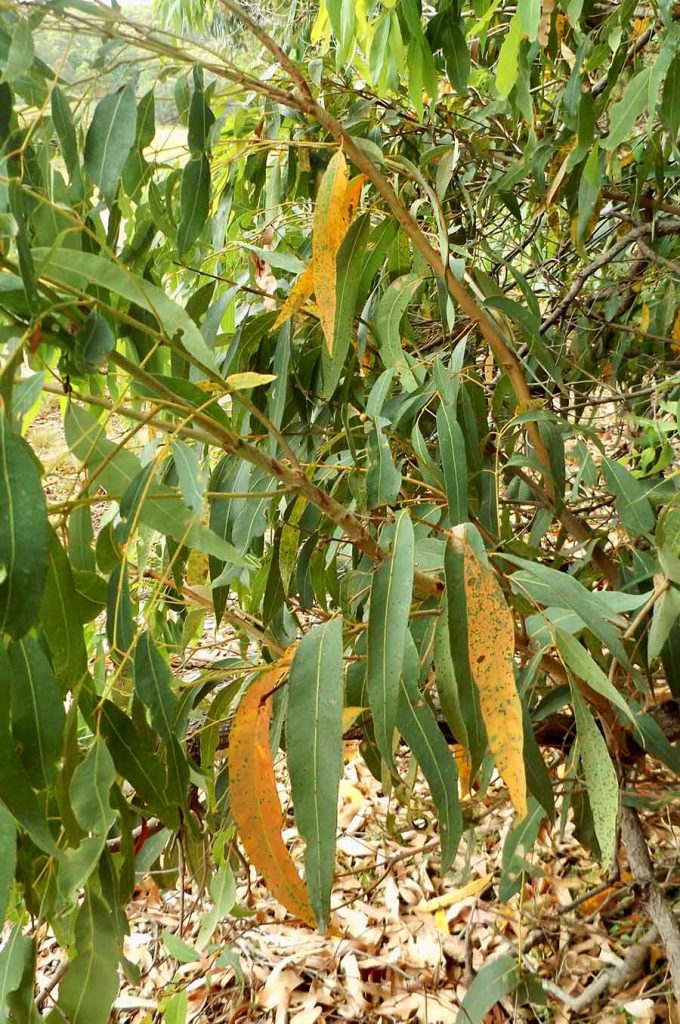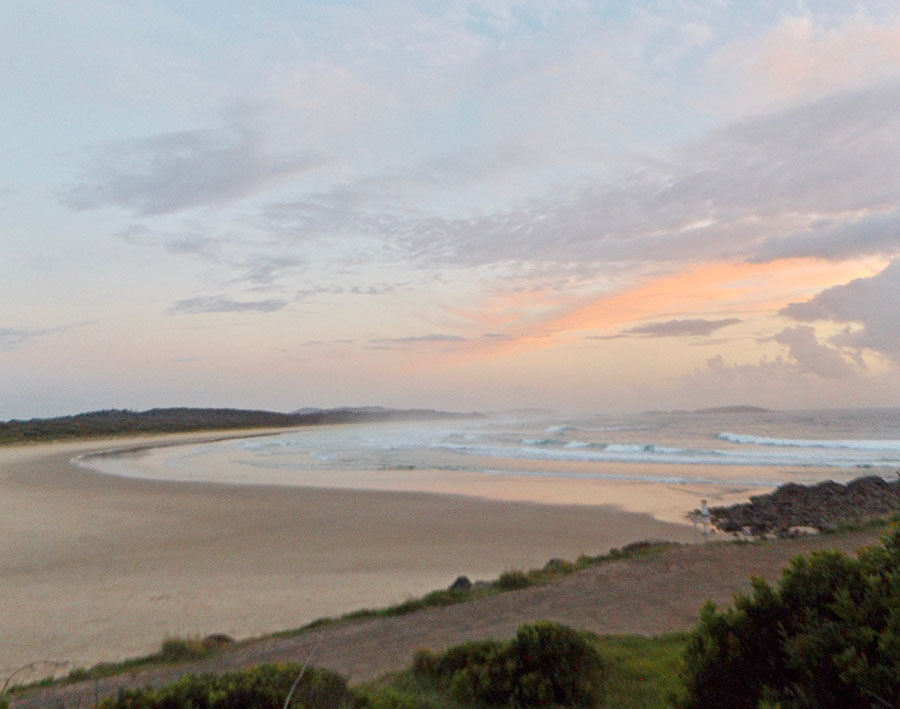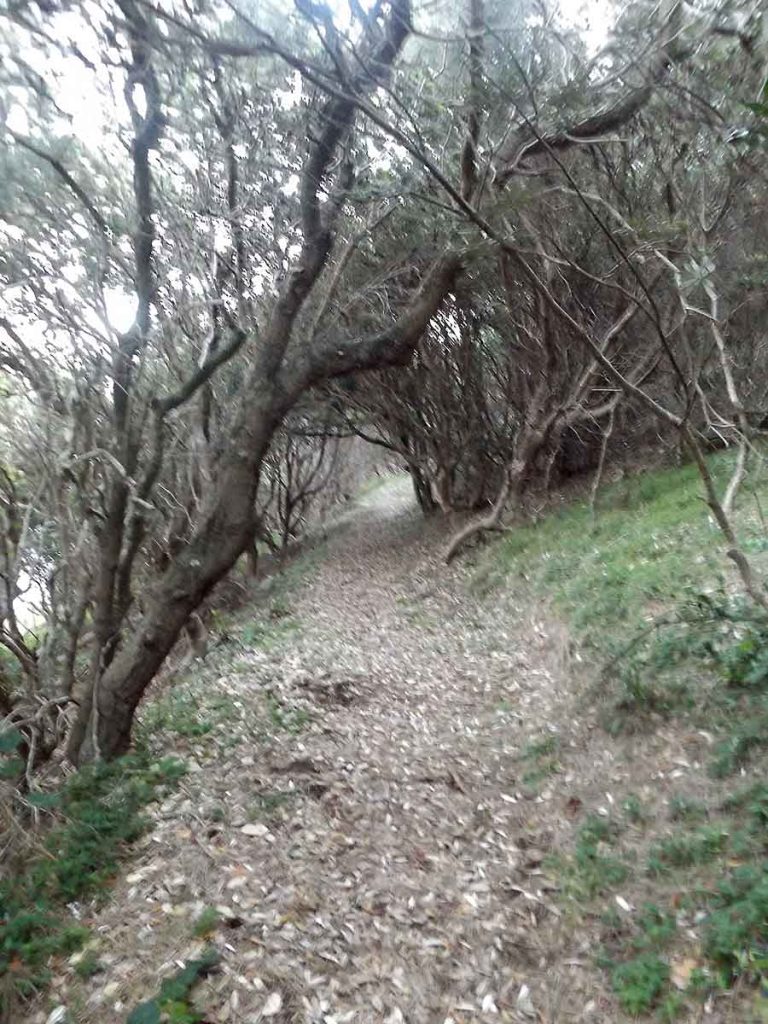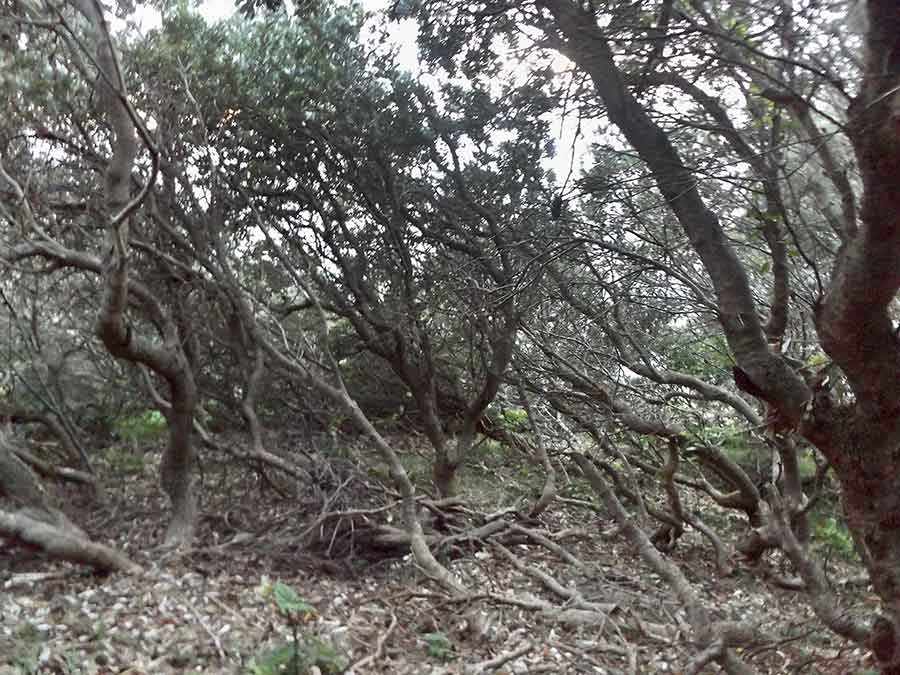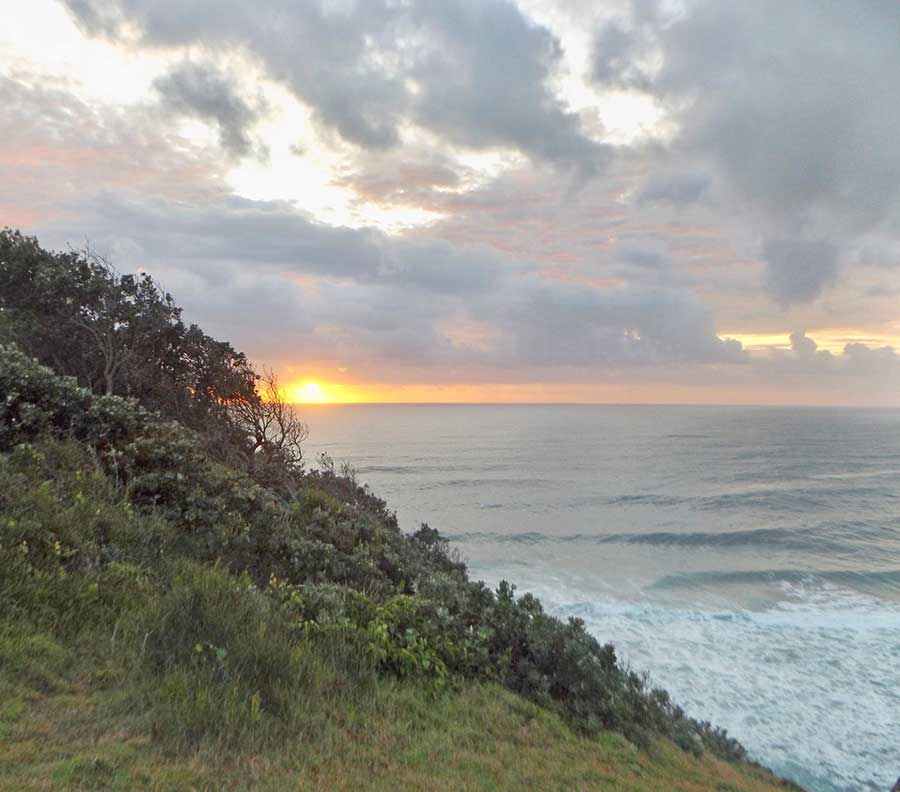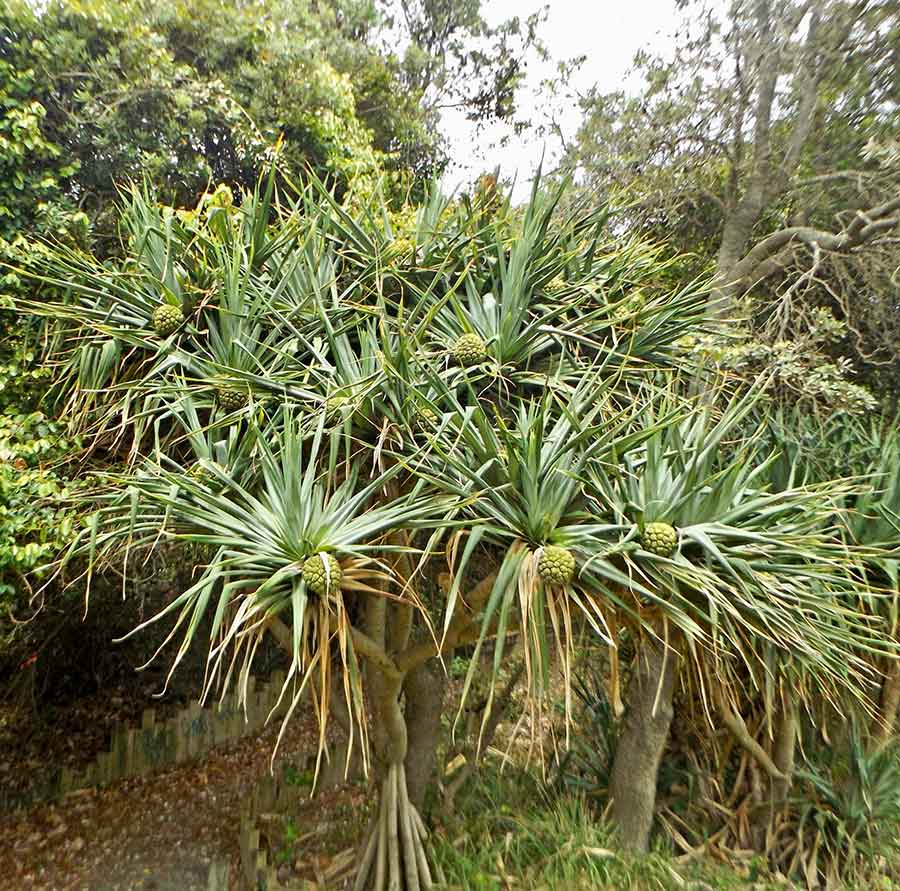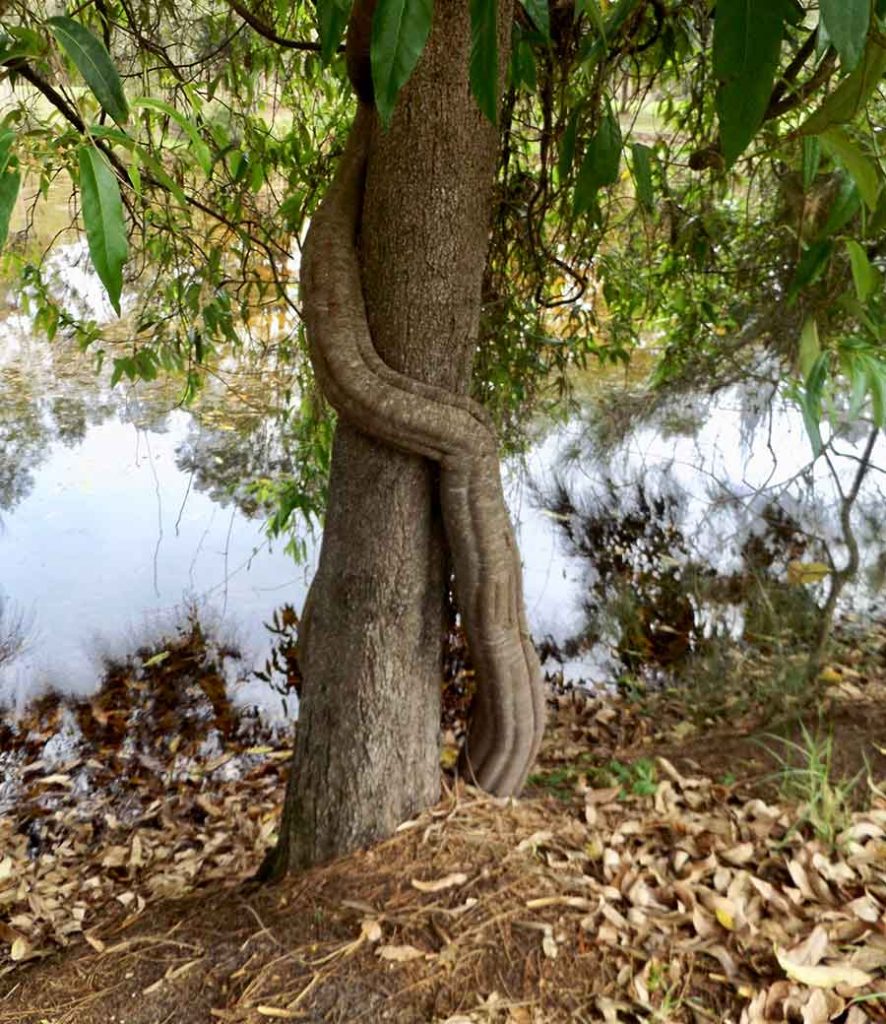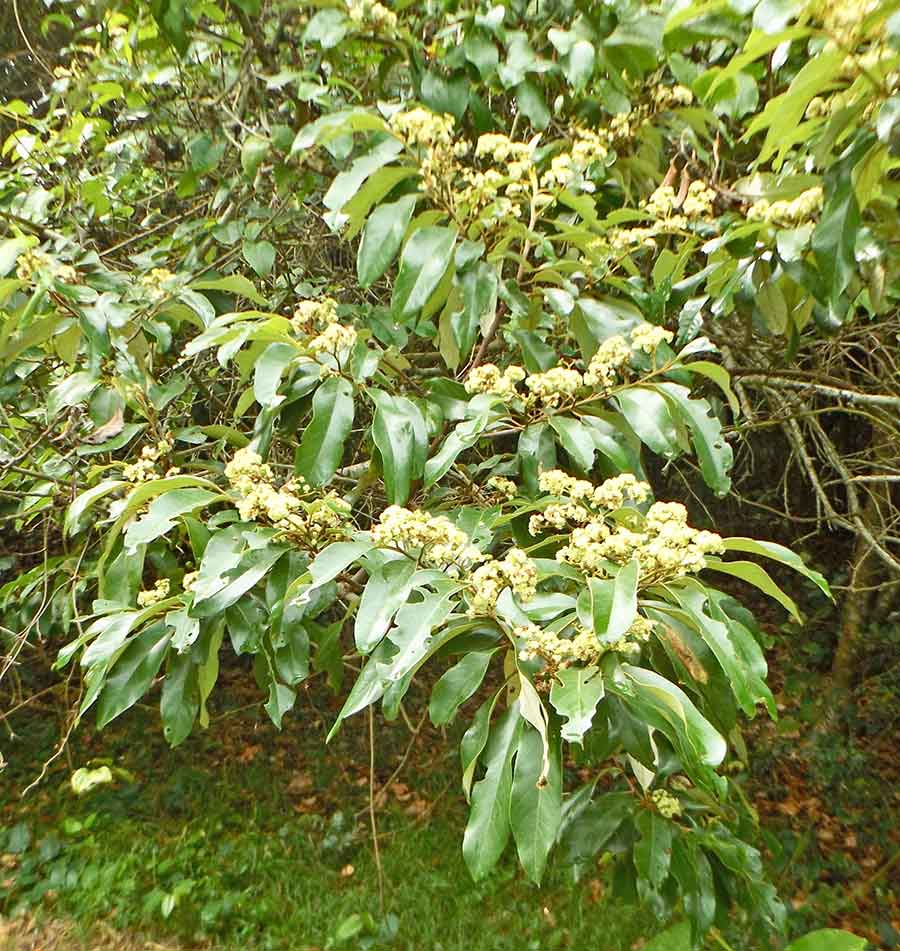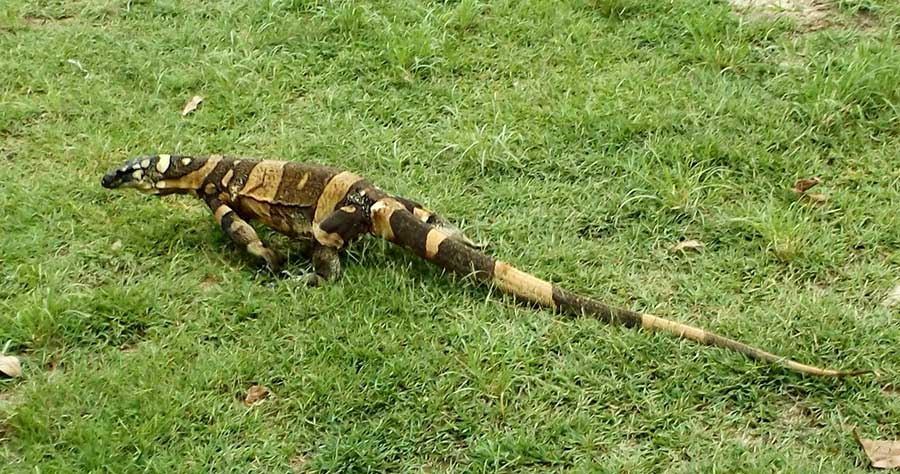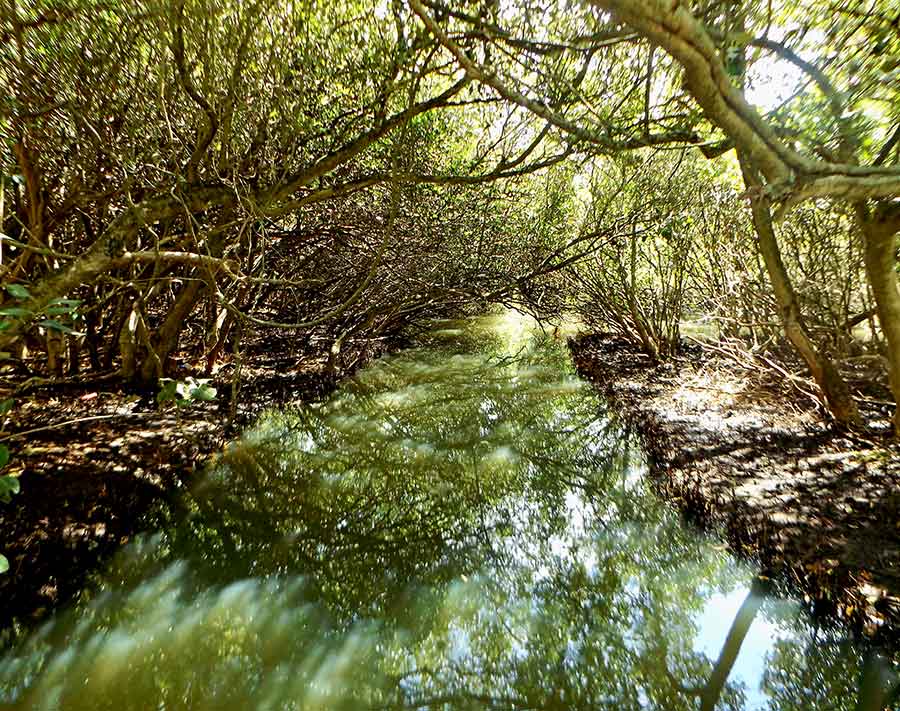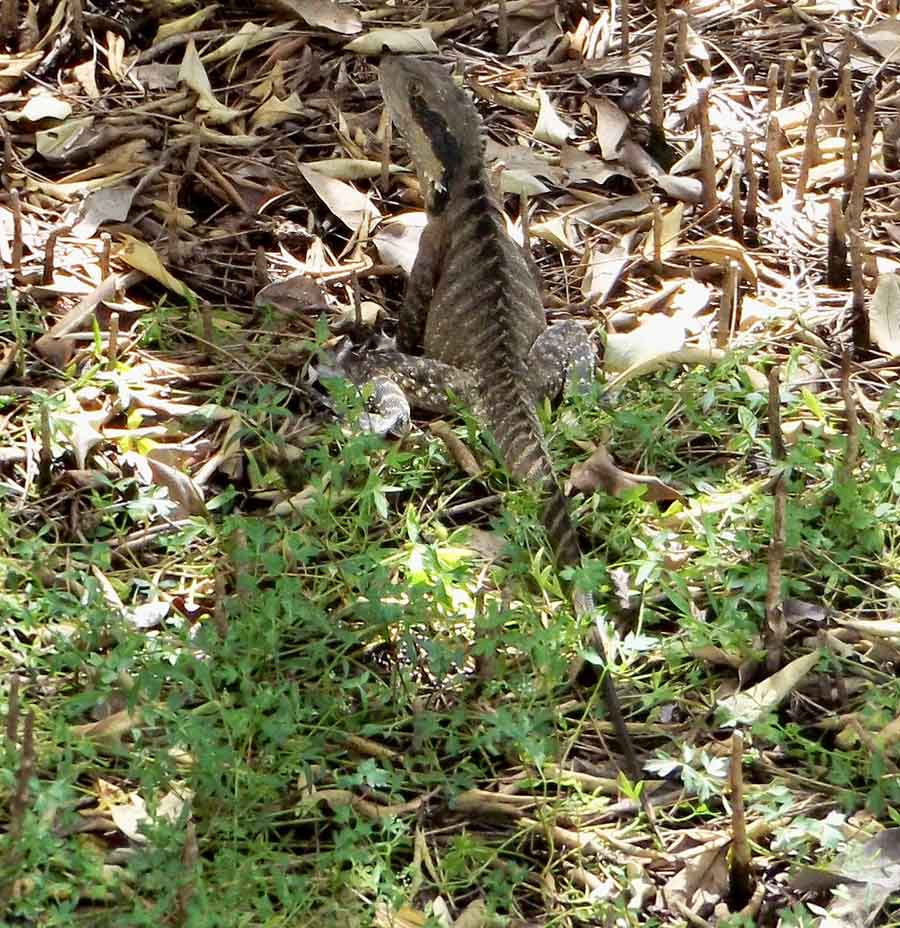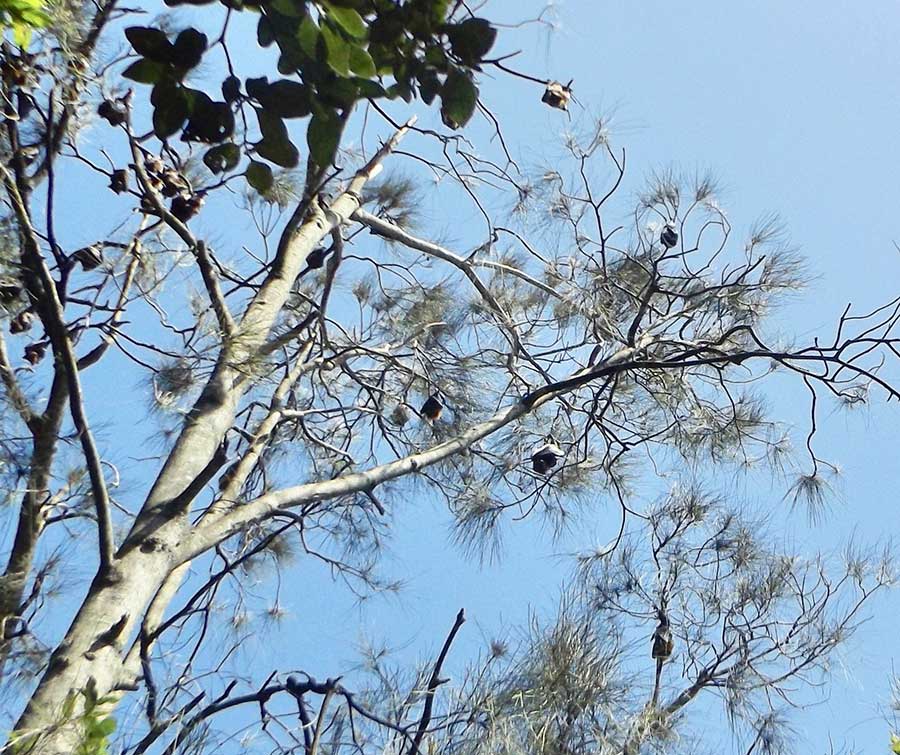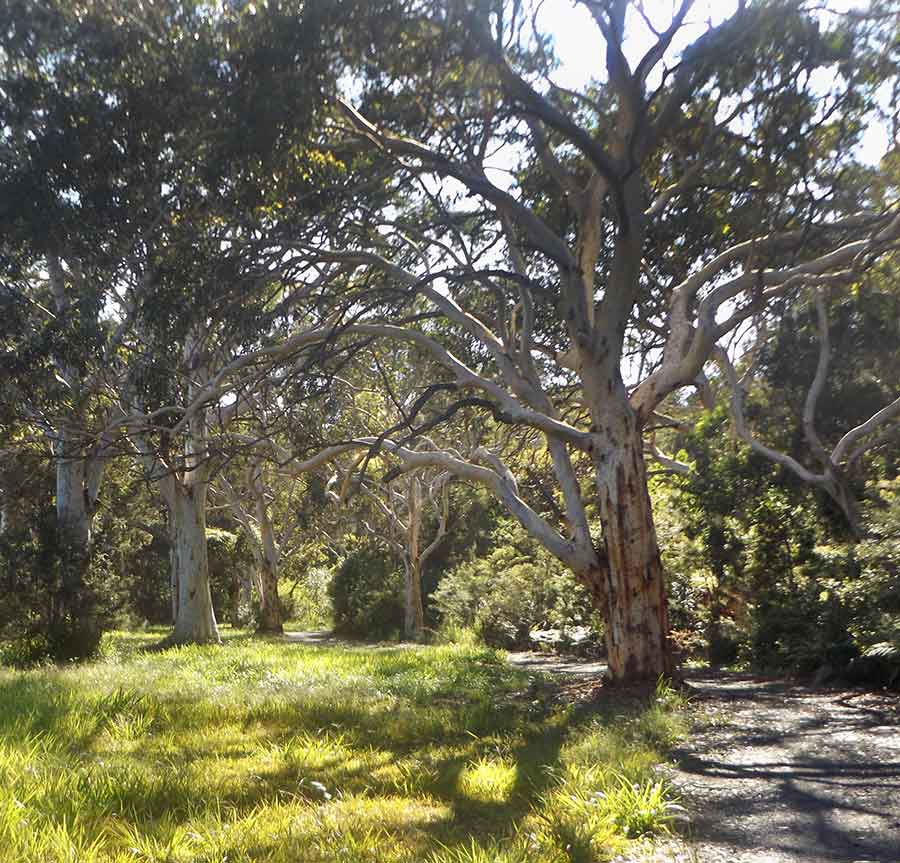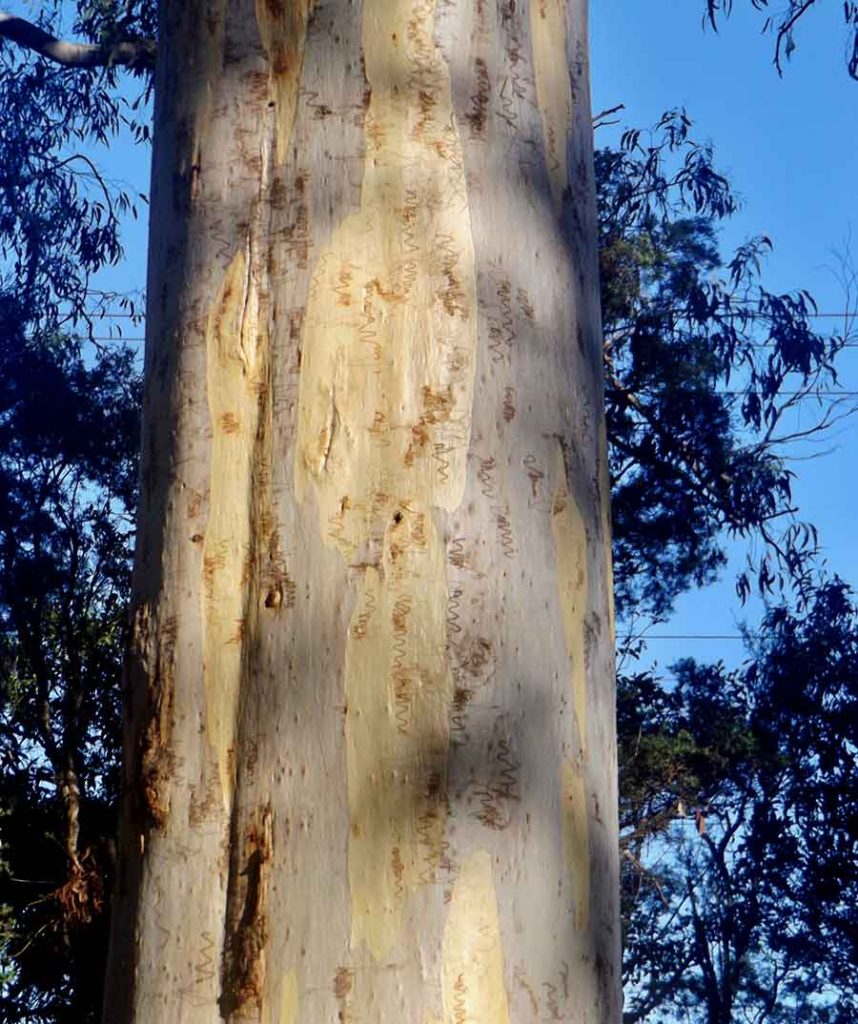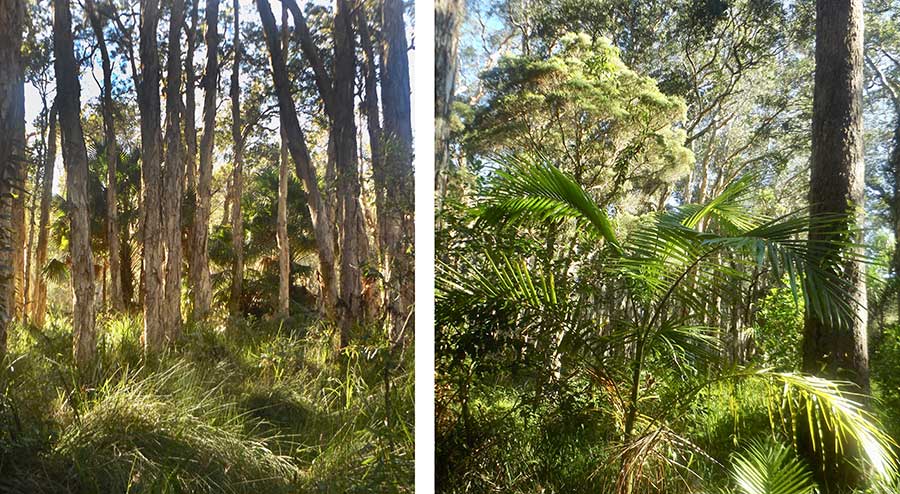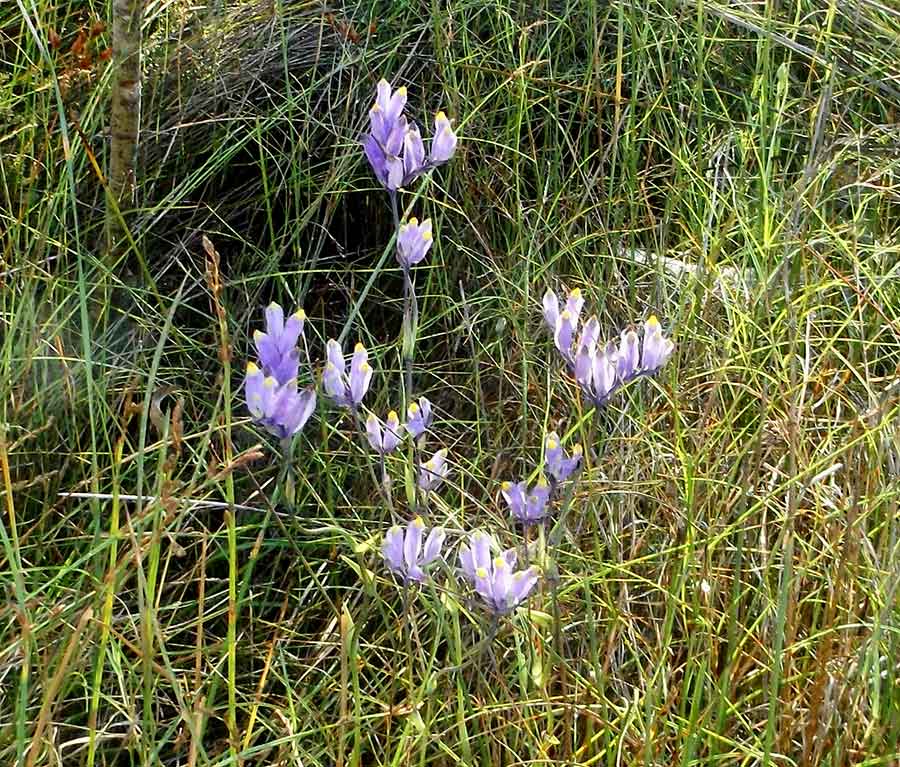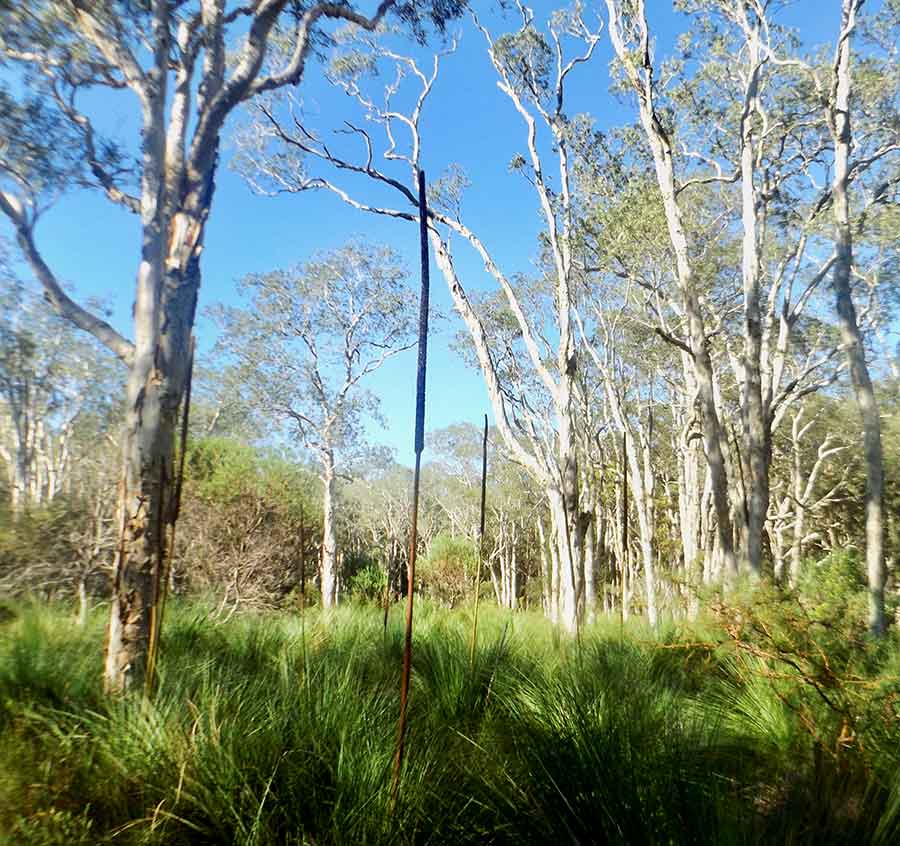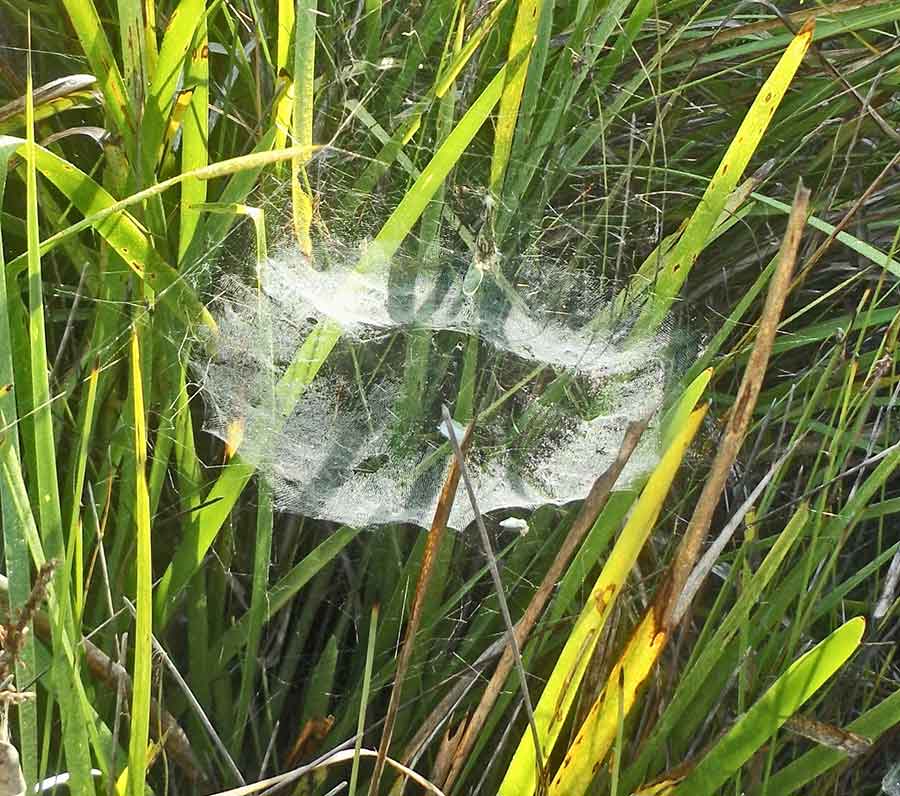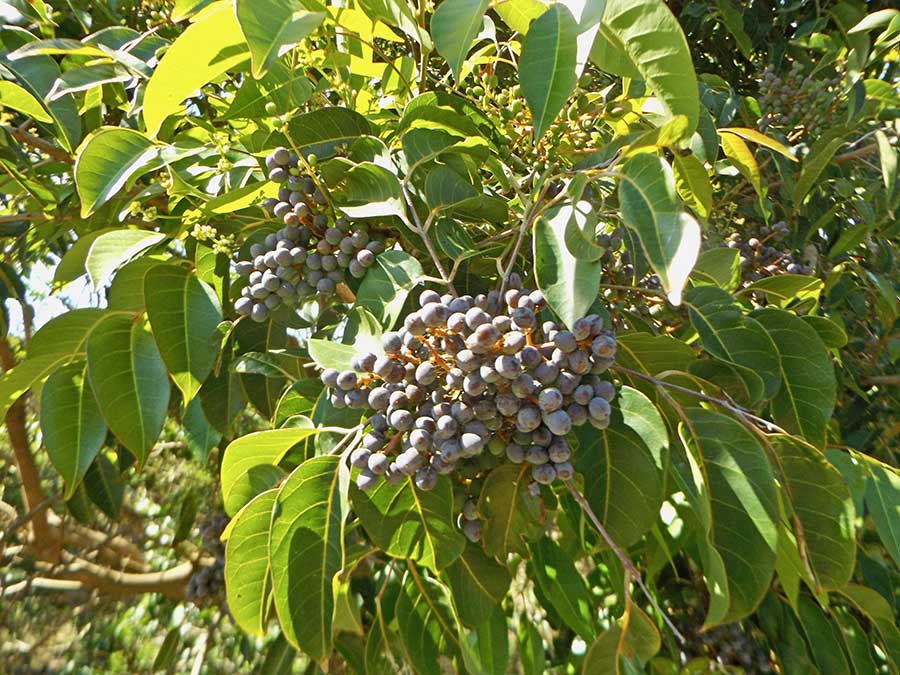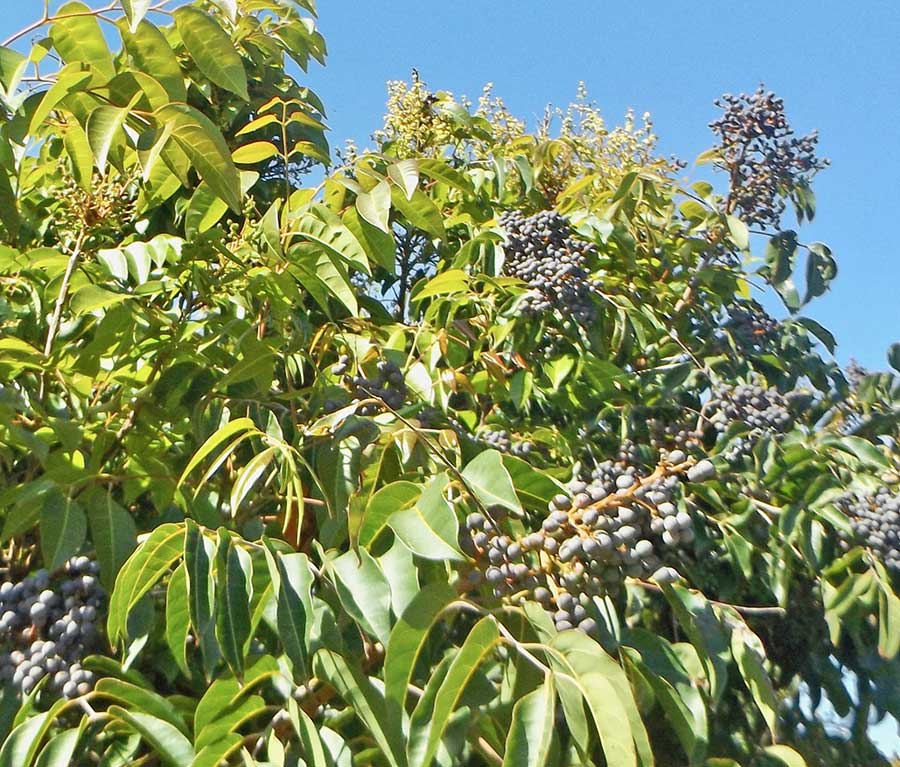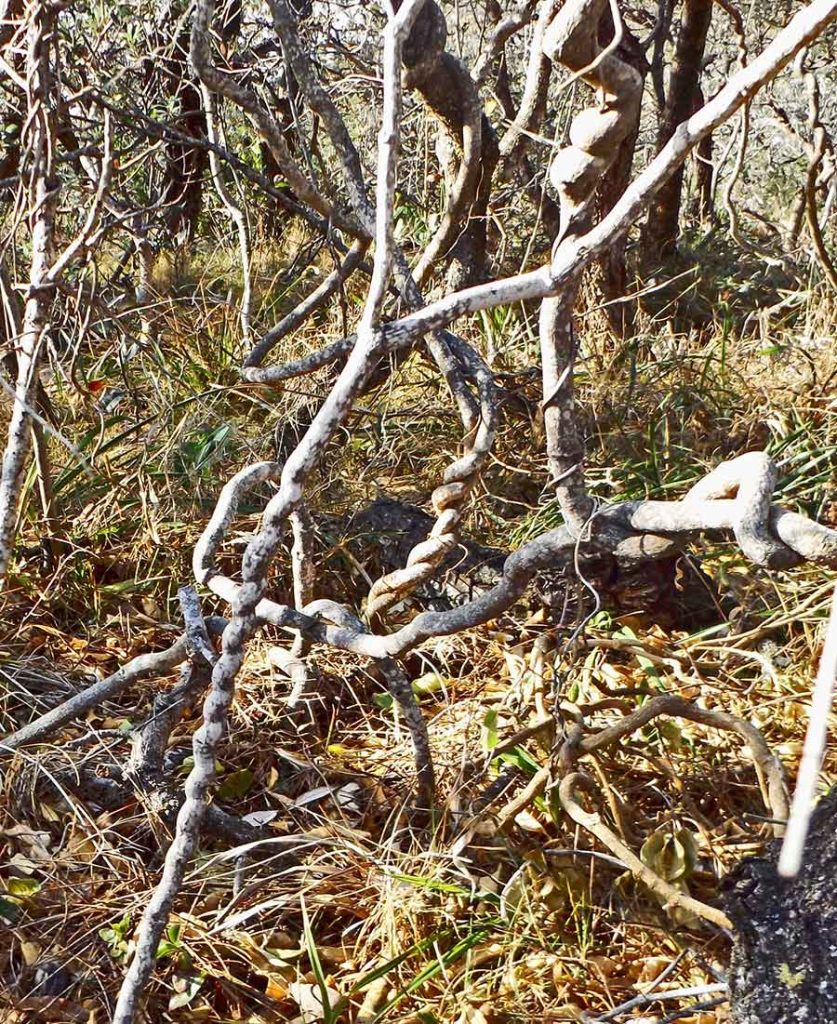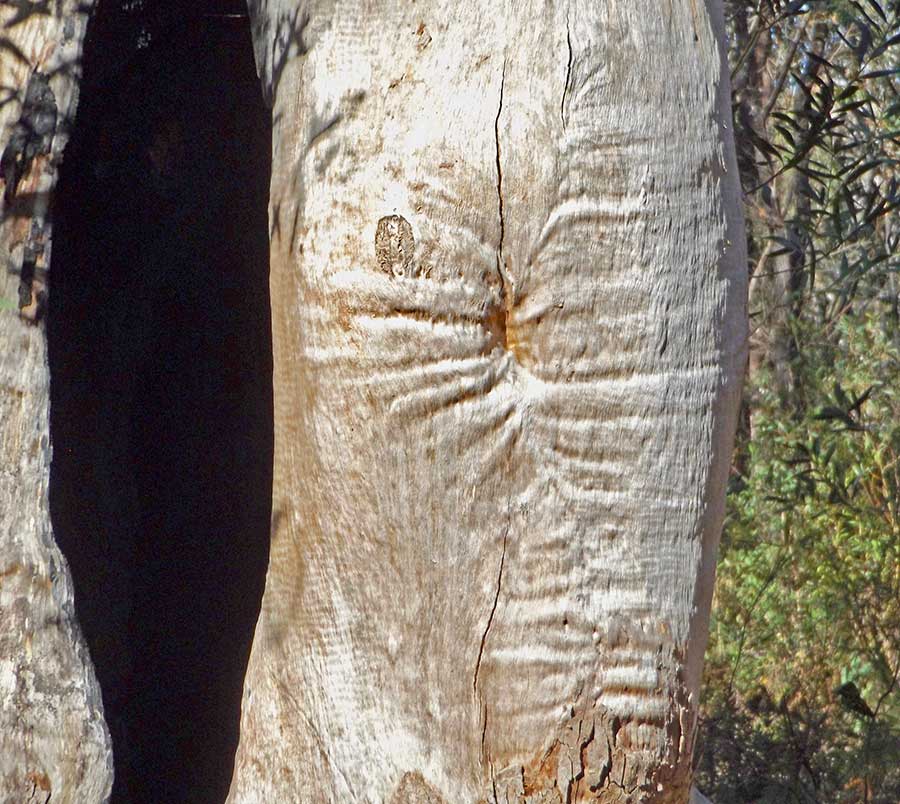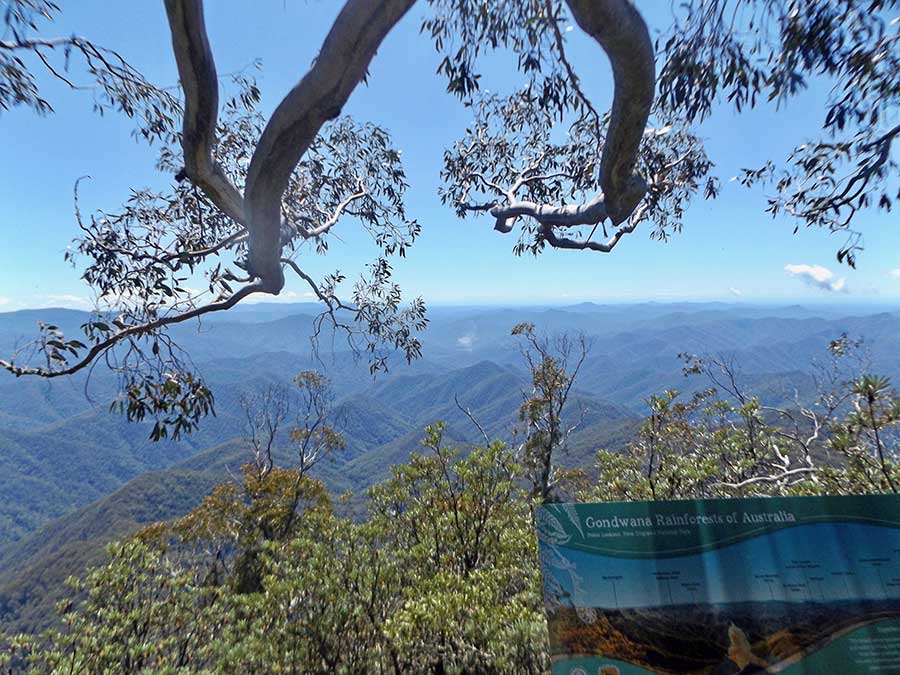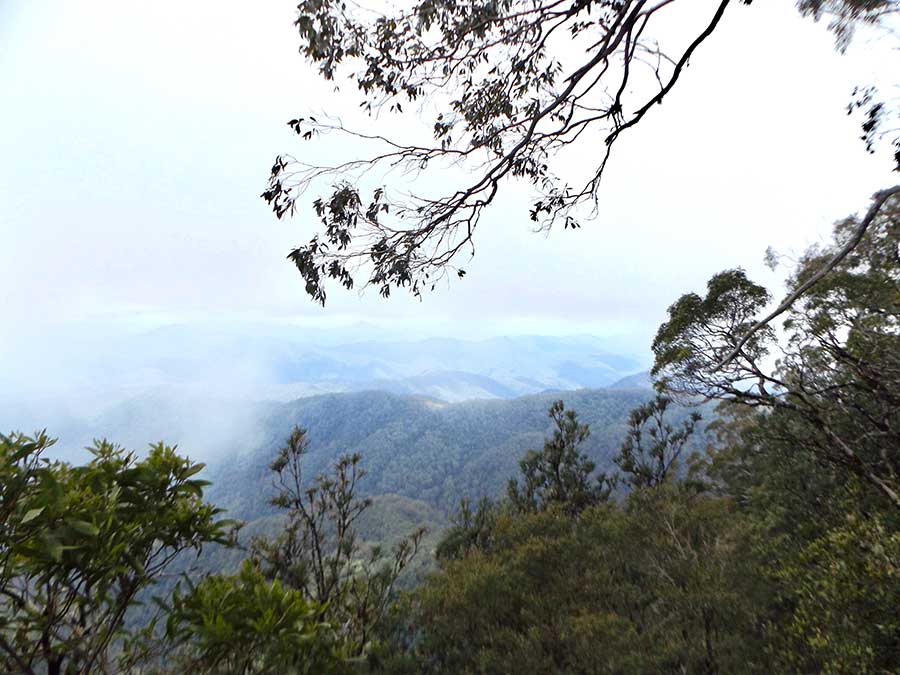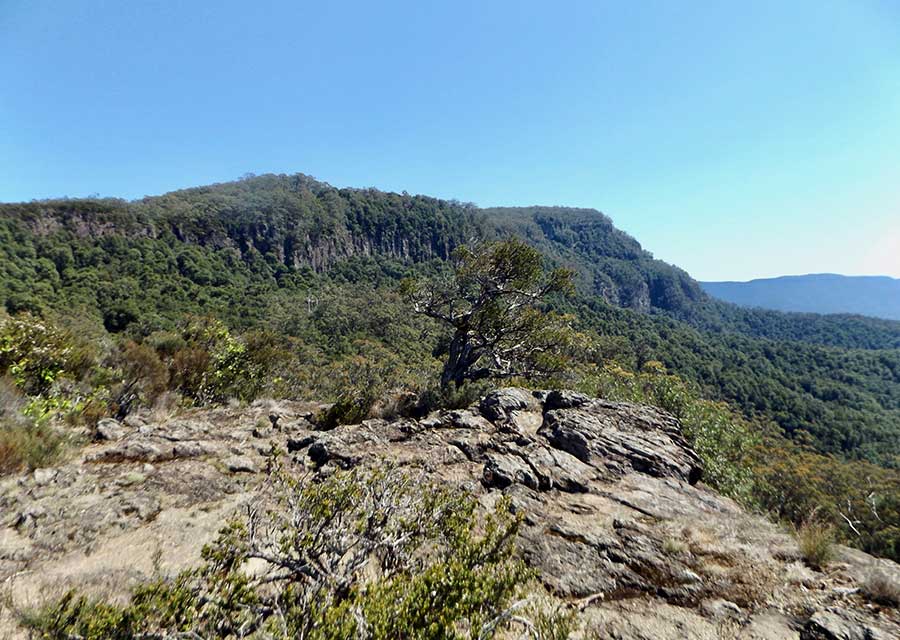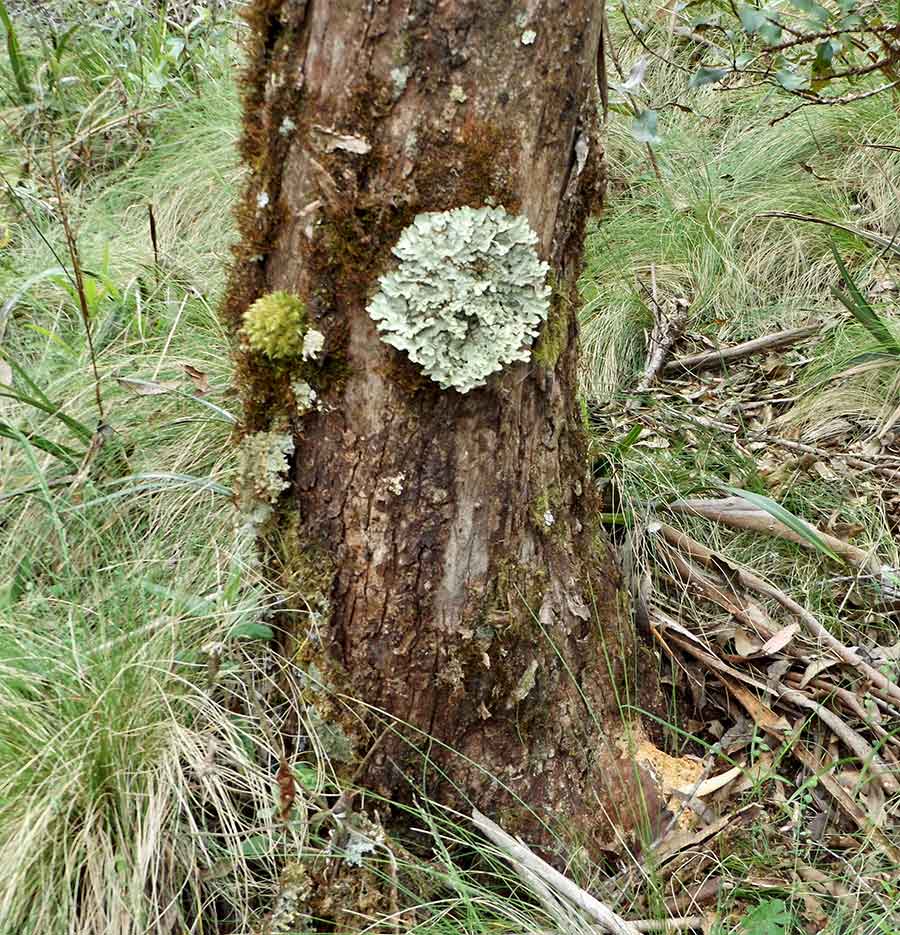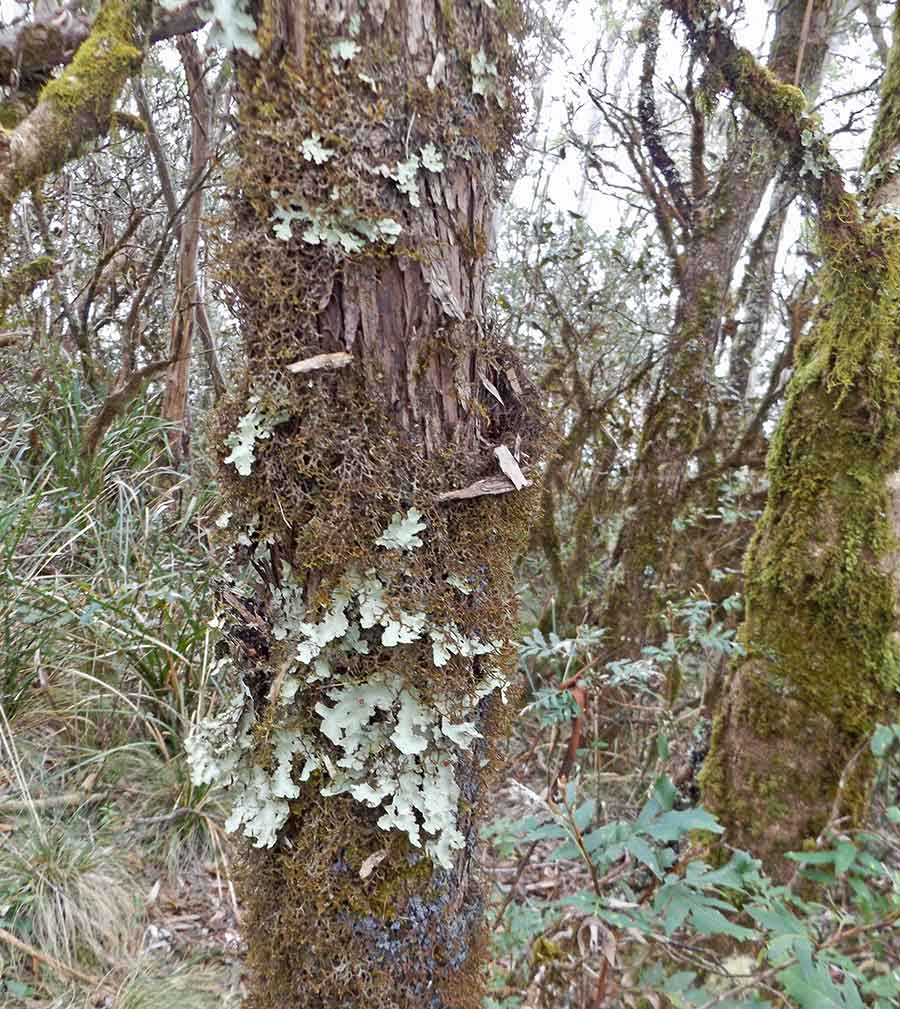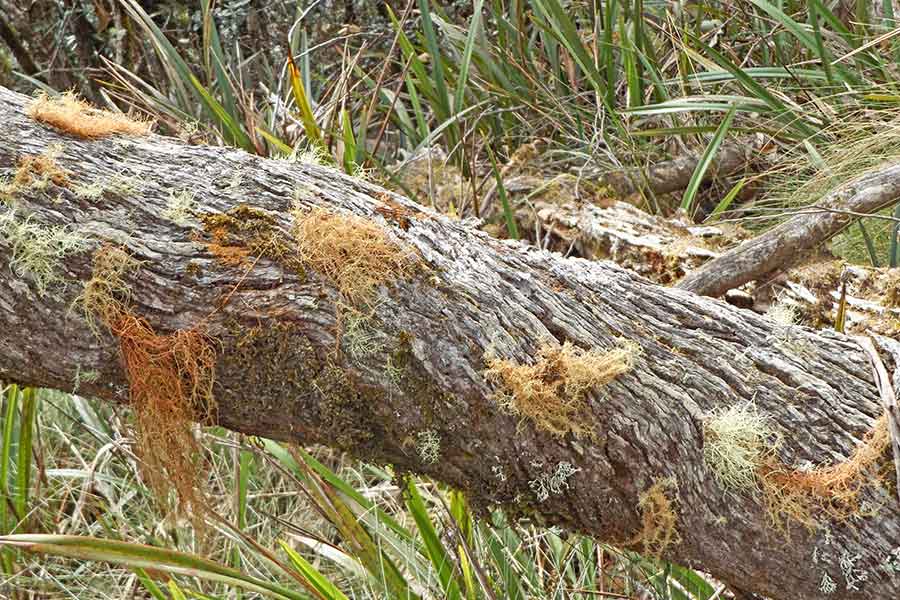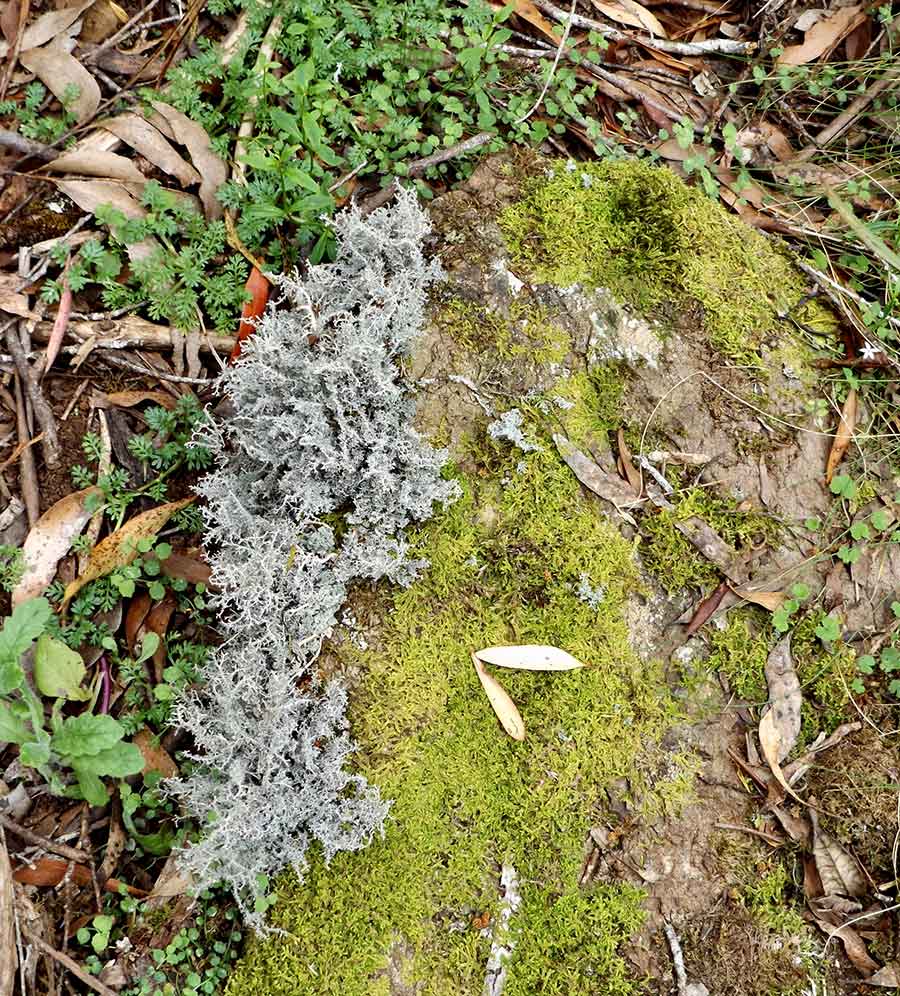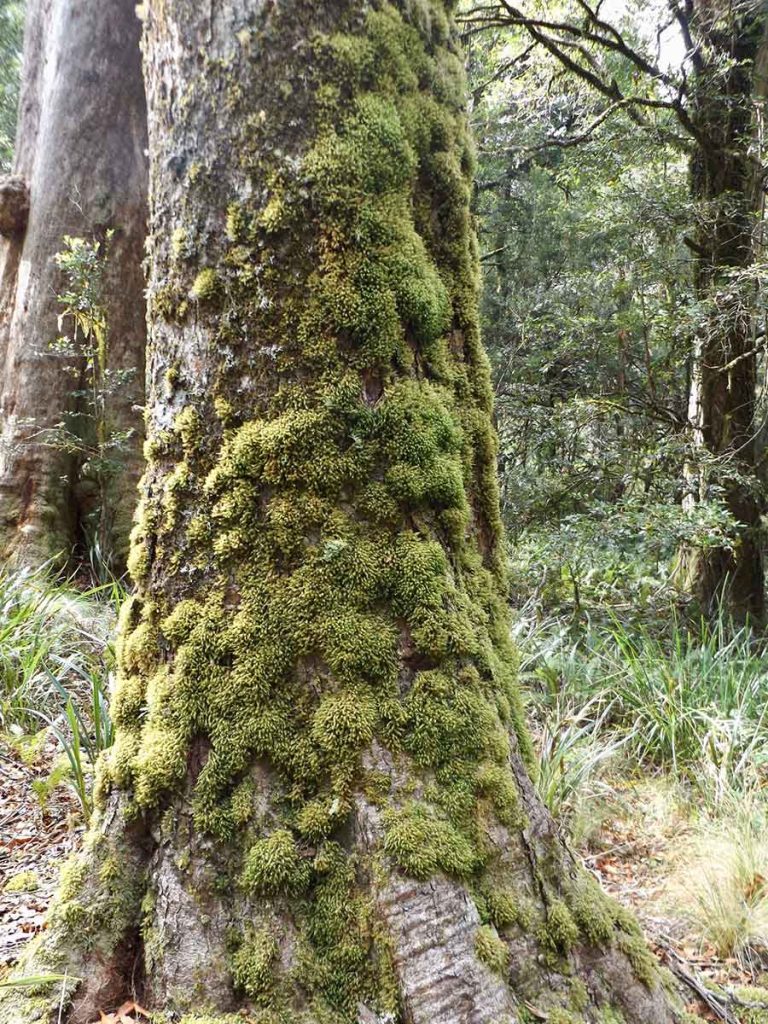I have decided to investigate each of the fire trails that penetrate the bush and heath after the civilisation of Lighthouse Beach has been left behind.
The first is Immediately after the last ‘estate’.
So close to houses and yet still wild enough to house some surprises for me, like this fallen forked branch fully decked in what might be orchids? Healthy greenery at any rate…

There are enough older trees with hollows for other plants… and hopefully creatures…to use as homes.

Some trees are very large, like this impressive one, which I think is an Angophora. It is so grand that I am grateful it has survived; too twisty for saw logs?

There is a variety of palms to be seen from the fire trail, adding to the patterns of foliage as if by design.

There are lots of paperbarks, including those surrounding a very full and rather scummy swamp.

A few wildflowers are out but what surprised me was above my eye level: a red-flowering mistletoe in a tree. Its slender bells were more noticeable when fallen onto the now sandy ground below.

Also eye-catching was a small sawn-off stump (ti-tree?) emulating a flower.

Almost at the beach, I was halted by this shell-studded plastic rope, its bright tresses cascading down the side of a Ned Kelly sculpture, a post. Someone must have picked it up as beach flotsam and grown weary of carrying it, but I appreciated the artistic sense of the arrangement.

I did reach the sea, only to find the beach scored by 4WD tracks, even up on the higher levels where they should not be, where shorebirds might nest.
Worse than Dunbogan Beach.
But here is just south of the very popular Lighthouse Beach, and it is not long after the October weekend when thousands of extra people visited.
Still, the sea, collaborating with the sky and sun, make such a picture that I can ignore what has been done to the sand.
And the walk itself has been worth doing.































